One of the most crucial components of your car is the starter because it ignites the engine. Your car won't run if it isn't functioning correctly. Because of this, you must replace it immediately. But how long will it take to fully replace a starter? Fortunately, we can provide you with an answer to that and let you know the most crucial information we have learned about it.
A starter replacement typically takes 2 to 4 hours. However, the exact time may vary depending on how long the mechanic will finish doing the repairs.
Keep reading to learn more about how long it takes to replace a starter. Along with explaining how the starter motor functions, we'll go through the warning signs and symptoms of a malfunctioning starter and how to replace a damaged starter properly. So, read on!
How Long Does It Take To Replace A Starter?
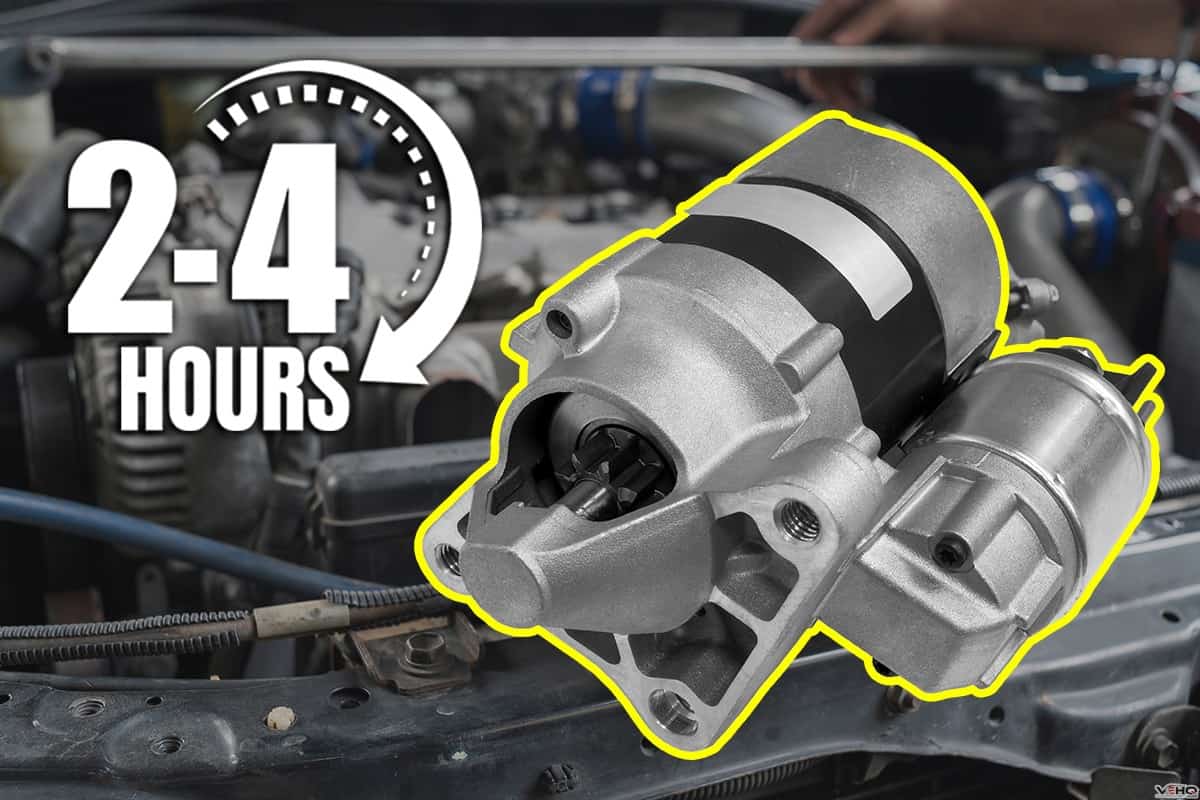
Although replacing a starter is not complicated, it is not a common DIY task like replacing a flat tire. The time it takes to replace a starter motor will vary, as with most other auto parts.
Once the starter is located and accessible, the rest of the job consists of merely disassembling the old starter and fixing in the new one. Typically, it takes 2 hours to complete the task, from removing the damaged item to replacing it. A more complicated replacement procedure could take 4 hours.
If you are familiar with the process, have the necessary tools, and have a basic understanding of automotive repairs, you can change the starter on your own.
However, it is still preferable to always let a professional mechanic do the job. This helps you save time and also assures you that the job is done correctly.
How Does Starter Motor Work?
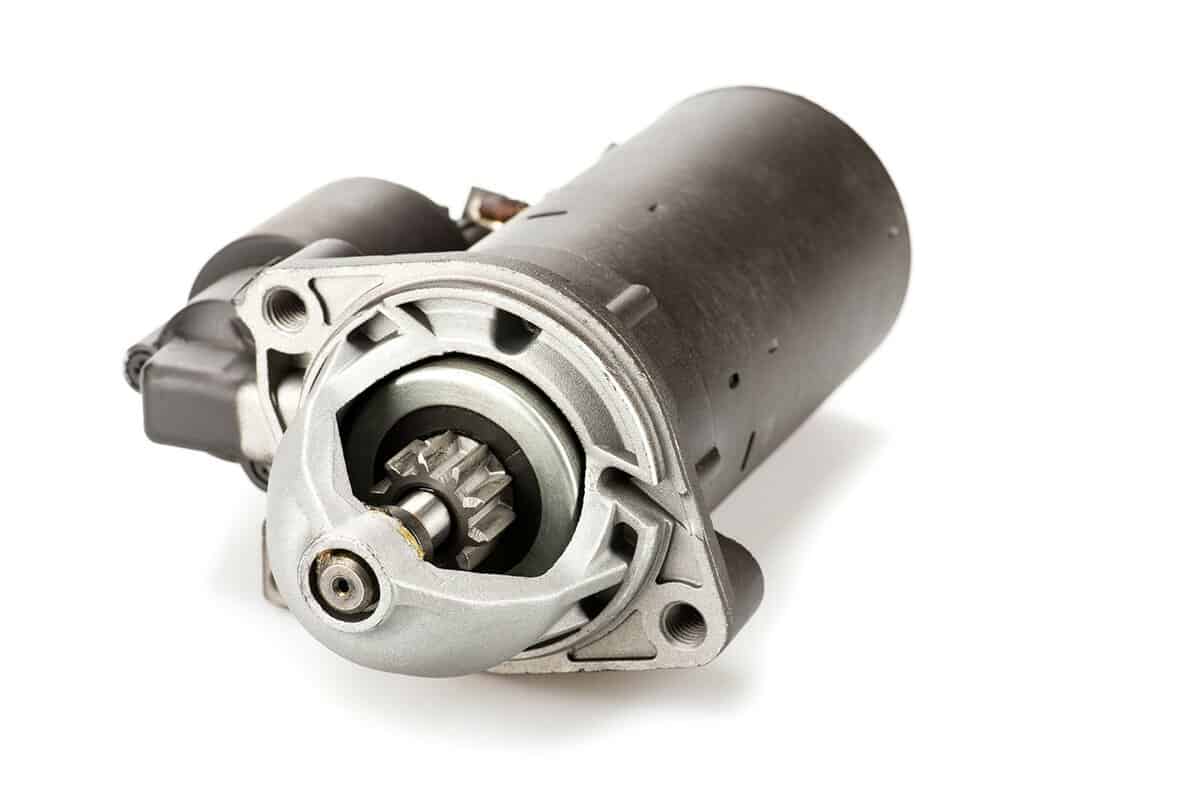
An electric motor located inside the car starter drives the starter gear. The battery in your vehicle powers this motor. The starter solenoid closes when the ignition key is turned, providing power to the starter motor.
During this process, the starter gear is simultaneously moved forward to engage with the engine's flywheel. Once the gear is engaged, the starter motor will turn while the flywheel spins.
The flywheel's rotation moves the pistons up and down inside the cylinder walls, which also rotates the engine's crankshaft. This begins the internal combustion engine cycle. As a result, the engine should crank and start to run automatically.
Release the key once the engine has started to run and the starter disengages. To prevent damage while the engine operates independently, the starter gear retracts away from the flywheel. The procedure repeats itself when you try to crank the car after turning off the engine.
What Are The Signs And Symptoms Of A Faulty Or Failing Starter?
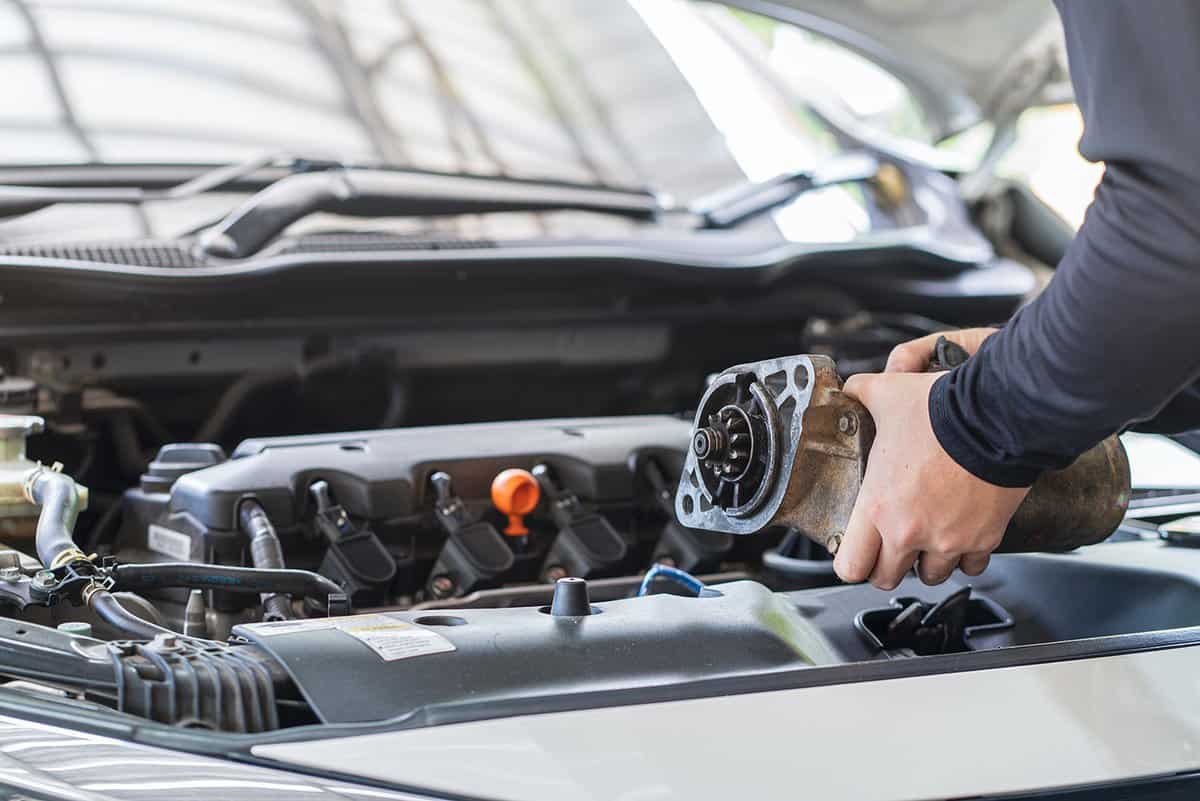
It is not strange for starters to fail because they are used so frequently. They can wear out faster than many other car parts. The signs of a bad starter are generally discrete, involving only simple connections to the starter motor.
Car Won't Start
Your engine won't turn over when you press the start button or turn the key. Every time you turn the key, you can hear a rattling or clicking sound—or nothing at all.
If this occurs, your starter system's primary component is probably malfunctioning. Your issue can be with the starter motor itself, the solenoid, or the electrical system. Although it might need to be towed to your neighborhood auto repair shop, you should address this as soon as you can.
Starter Engages But Doesn't Spin The Motor
When you turn on the ignition, you may occasionally hear the starter turn on but not hear the motor turn on. Starter problems can occasionally be mechanical.
In this instance, the gears attached to the flywheel may cause the issue. The gear against the flywheel may have peeled or gone loose. In either scenario, the engine won't start, and you'll need a qualified repairer to replace the starter.
Smoke And Burning Smell
The starter is a mechanical device that is electrically driven. The starter may occasionally overheat if it continues to receive power or if the starter motor does not turn off after the engine has started.
If this happens, you'll probably notice or smell smoke from the engine. Short circuits, blown fuses, or ignition switch issues could all be responsible for this issue.
Slow And Intermitting Starting
Slow engine cranking may indicate a problem with the starter or the battery. It might indicate that the battery's ability to power the starter is decreasing, but it might also indicate that it is nearing the end of its service life.
A starter could last between 30,000-200,000 miles, depending on the situation, but factors such as build quality, maintenance, and driving habits can affect its lifespan.
The battery load test is an excellent approach to determining where the problem is coming from for sure. A failing battery is probably the cause of low electric output. The starter is likely deteriorating if the battery is normal.
Most likely, an electrical issue between the starter and the battery is what's causing your automobile to start intermittently or not at all. The starter's parts typically don't quit functioning before randomly functioning again. Electrical flow may be allowed and restricted by a pinched loose connection until it is repaired.
How Do You Properly Replace A Starter?
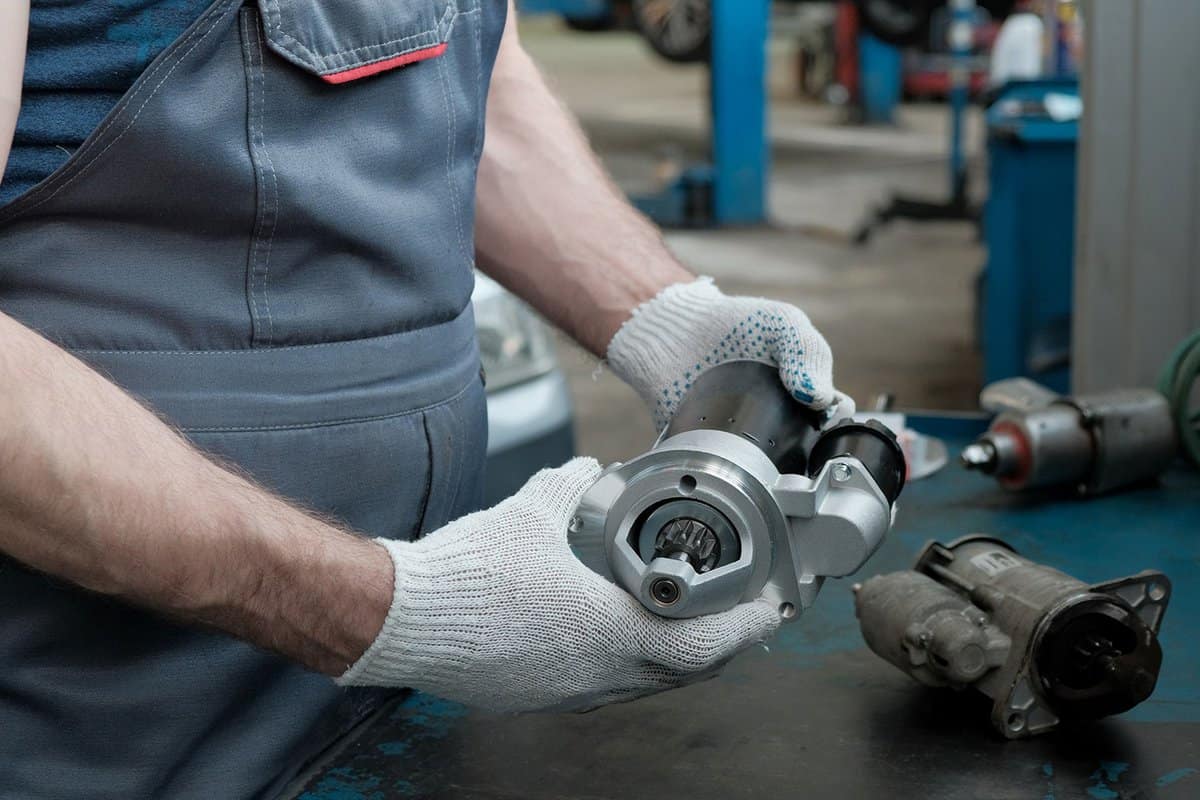
Replacing a starter is not a challenging task. Most of the time, it's a straightforward process, but it will require a basic understanding of cars to complete it properly. Here is a step-by-step guide to replacing a starter that covers all you need to know.
Step 1-Disconnect The Battery
Disconnecting the negative battery cable is the initial step. By doing this, you can avoid accidentally electrocuting yourself when replacing the starter. Use a socket wrench to remove the cable by loosening the nut. You can now plug in the extension wire from your car to provide you with much more light.
Click to see this Socket Wrench Set on Amazon.
Step 2-Locate The Starter
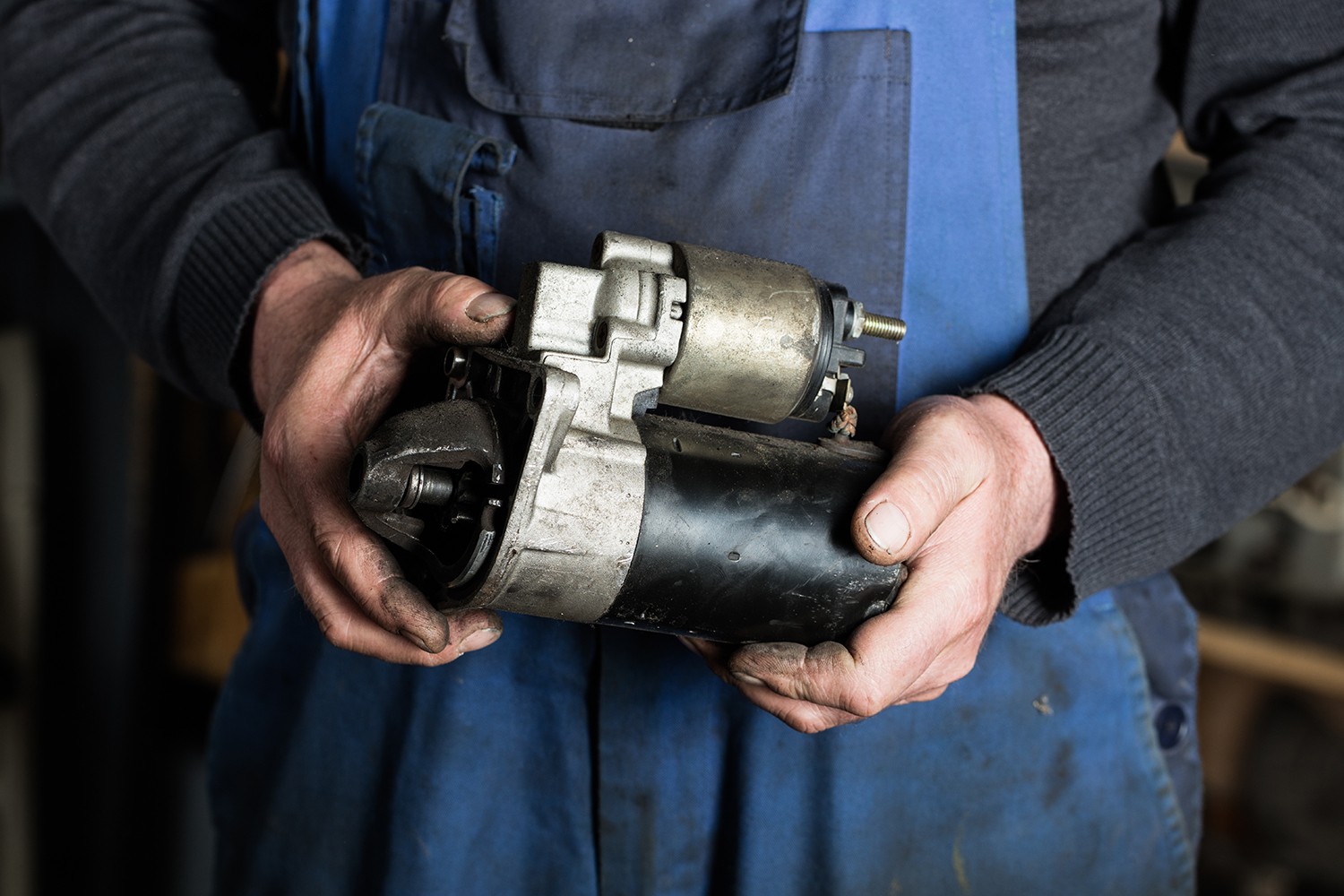
Two cylindrical devices are typically attached to the starter, one of which is larger than the other. The starter solenoid is a small cylinder. The connection between the battery and the solenoid is another way to recognize the starter.
Typically, a wire runs from the battery to the solenoid's terminal, often at the solenoid's top. The connection is essential for locating the starter. A running wire is the starter's primary connection to the battery or fuse box.
Since every car is built differently, it can be challenging to locate the starter. The best course of action is to review the user's manual for your car. You may access your car's manual on the manufacturer's website if it is not already there; all you need to do is search for it using the model and release year of the vehicle.
Step 3-Remove The Starter
Disconnect the wires connected to the starter. After doing so, use a socket wrench to remove the bolts that hold the starter in place. It's important to remember which bolts go where because they could not all be the same size.
Step 4-Install The New Starter
Now we can install the new starter. Put the new starter in the same spot as the old one; a little moving is required to fit it into the slot precisely.
Wires should be connected to the appropriate terminals. The positive wire is often connected to the top terminal, while the negative wire is connected to the bottom terminal. You may bolt the starter into the position after they are linked. Use the proper-sized bolts, and tighten them up tight.
Step 5-Reconnect The Battery
The battery cable must be reconnected. Reinstall the nut and tighten it using a socket wrench. Your starter replacement is finished once it is secure.
Step 6-Test The Car
Start the car after making sure the above stages were carried out correctly. Turning over the engine should be smooth. If not, pay attention to the noises it makes. If the car doesn't start, check the battery and the starter connection; a proper connection should result in a positive action.
Watch this video for more details.
It's A Wrap!
A skilled mechanic typically needs between two and four hours to repair a starter motor, which is a reasonably simple procedure. If the mechanic needs to remove additional components to reach the starter, it could take longer for some vehicles.
When removing and replacing the defective starter, you only need simple hand tools. The most important rule to follow while replacing a starter is first to disconnect the battery. It will stop any unintentional sparks from happening as you work on the car.
Made it to the end? Here are other articles you might find helpful:
How To Use A Remote Starter Switch [Step By Step Guide]
My Auto Start/Stop Makes A Clicking Noise – Why? What To Do?

